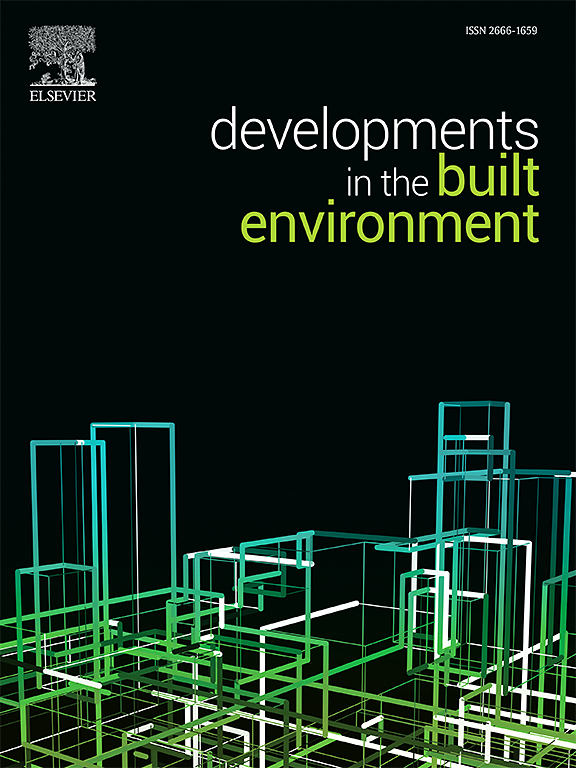Identifying barriers and enablers for emerging value chains in open-loop mineral wool waste recycling within the construction sector
IF 8.2
2区 工程技术
Q1 CONSTRUCTION & BUILDING TECHNOLOGY
引用次数: 0
Abstract
Global objectives to mitigate climate change, minimise waste, and ensure the efficient use of resources require urgent actions in multiple sectors, including construction and buildings. Currently, rock wool and glass wool are widely used as insulation materials in the building stock across Europe, while in multiple countries are still landfilled at their end-of-life. Within a recent research project, mineral wool waste has proved to be recyclable as a precursor in an alternative binder to carbon-intensive conventional cement, such as alkali-activated materials (AAMs). This open-loop recycling of mineral wool in AAMs is associated with the creation of new value chains within the circular economy that can trigger symbiotic relationships between urban areas and industries. Stakeholders who produce mineral wool waste–based alkali-activated construction materials at a pilot scale in 5 European countries were interviewed to evaluate their environmental, economic and social performance using selected circular economy indicators. Strengths, weaknesses, opportunities, and threats (SWOT) analysis was applied to identify common trends across pilot-scale productions and potential industrial up-scales. While common barriers include limited economic viability at the pilot scale, which can be addressed through industrial upscaling with optimised supply chains, there is also variability in consumer acceptance of waste-based materials across countries. Finally, potential solutions to the identified barriers along each step of the value chain are proposed. The results show that combined actions of industry, cities, and policymakers are required to overcome barriers and nudge the transition towards a circular economy. This can be achieved by using economic incentives to enhance the cost-competitiveness of alternative construction materials, promoting green public procurement, and raising public awareness.
确定建筑行业开环矿棉废物回收中新兴价值链的障碍和推动因素
减缓气候变化、减少浪费和确保资源有效利用的全球目标需要在包括建筑和建筑在内的多个部门采取紧急行动。目前,岩棉和玻璃棉在整个欧洲被广泛用作建筑材料的绝缘材料,而在许多国家,岩棉和玻璃棉在使用寿命结束后仍被填埋。在最近的一个研究项目中,矿棉废料已被证明是可回收的,可作为替代碳密集型传统水泥的前体,如碱活化材料(AAMs)。在aam中,矿棉的开环回收与在循环经济中创造新的价值链有关,可以触发城市地区和工业之间的共生关系。我们采访了在5个欧洲国家中试规模生产矿棉废料碱活化建筑材料的利益相关者,使用选定的循环经济指标评估他们的环境、经济和社会绩效。优势、劣势、机会和威胁(SWOT)分析用于确定中试规模生产和潜在的工业大规模生产之间的共同趋势。虽然常见的障碍包括试点规模的经济可行性有限,这可以通过优化供应链的工业升级来解决,但各国消费者对废物基材料的接受程度也存在差异。最后,对价值链上每一步所识别的障碍提出了潜在的解决方案。研究结果表明,需要行业、城市和政策制定者共同采取行动,克服障碍,推动向循环经济的过渡。这可以通过使用经济激励措施来提高替代建筑材料的成本竞争力、促进绿色公共采购和提高公众意识来实现。
本文章由计算机程序翻译,如有差异,请以英文原文为准。
求助全文
约1分钟内获得全文
求助全文
来源期刊

Developments in the Built Environment
Multiple-
CiteScore
7.40
自引率
1.20%
发文量
31
审稿时长
22 days
期刊介绍:
Developments in the Built Environment (DIBE) is a recently established peer-reviewed gold open access journal, ensuring that all accepted articles are permanently and freely accessible. Focused on civil engineering and the built environment, DIBE publishes original papers and short communications. Encompassing topics such as construction materials and building sustainability, the journal adopts a holistic approach with the aim of benefiting the community.
 求助内容:
求助内容: 应助结果提醒方式:
应助结果提醒方式:


